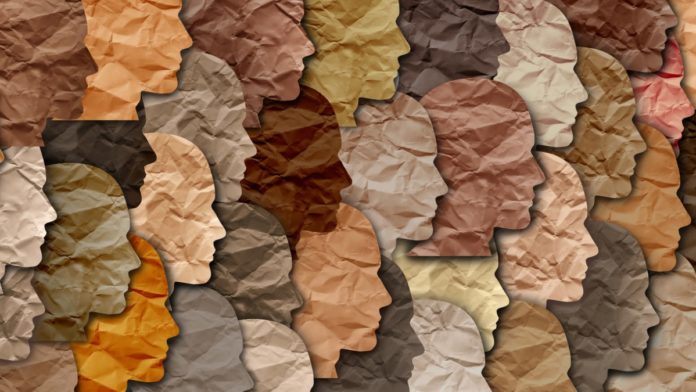
We spoke with Bob Lockett, the chief diversity & talent officer at ADP. He also oversees performance management, leadership development, succession planning, engagement, culture, OD and the non-profit ADP Foundation.
What are your current DEI practices and how do you go about creating them?
To create an inclusive workplace environment, employees must feel a sense of belonging. At ADP, we strive to create a space where everyone is valued and appreciated for their unique individuality. Only when we feel truly accepted can we contribute to the best of our abilities. To create the best conditions for talent’s success, companies must remember there’s no one-size-fits-all approach to DEI. Instead, you must lean into your own workforce data to understand where change needs to happen. I often refer to this approach as the scientific method – employing a pragmatic lens so that problems can be reframed and solved differently.
We have conducted research, starting within our own organization, so that leaders can make informed decisions specific to their companies’ DEI needs and goals. Our DEI practices are constantly evolving over time so that we can continue building on our progress and momentum.
I think one of the issues that people run into with maintaining and growing DEI is an inability to understand or measure their program’s success. What is your process?
The beauty of starting with the data to identify gaps and develop actionable plans, is that you can go back to that data to measure true progress and continue building upon it.
As an example, at ADP, after leveraging data to inform our approach, we created a D&I Talent Taskforce to advance under-represented talent in leadership. By enhancing our hiring process, we are more effectively sourcing, interviewing and hiring under-represented talent. We’ve seen a direct, measurable impact.
ADP also has aligned our career development programs, promotion practices and retention strategies to close any representation gaps. Our top 150 leaders in the U.S. have diversity goals tied to compensation as an incentive to diversify our leadership ranks so they accurately represent our communities and clients. We also championed initiatives — including the Latinx Academy, McKinsey Management Accelerator and Black Executive Leadership Program — to support emerging leaders by recognizing their potential and helping them overcome any challenges they may face.
Let’s shift gears a bit and talk about technology’s role in the field. What technology are you using to support or facilitate DEI?
With our robust HCM dataset and workforce benchmarks, ADP’s DEI Dashboard is designed to allow organizations to analyze the diversity, equity and inclusion aspects of their businesses as well as set, track and expand DEI goals. The dashboard’s DEI benchmarks use “live” HR and compensation data from ADP’s diverse workforce dataset of more than 900,000 companies and over 30 million employees. These insights allow leaders to measure their DEI metrics against similar organizations, as well as local populations through census data.
In addition, through story-based insights, proactive recommendations and practices, embedded DEI nudges and research-based surveys, each part of the dashboard works in tandem to help companies assess, plan and act to drive measurable change. By consistently tracking DEI progress, organizations can tailor their goals toward creating a diverse and inclusive workplace environment while meeting their business needs.
Recently it seems that many things are changing in the world of HR. Do you see anything that’s changing in your area?
A major evolution right now is the expectation of transparency and the use of data to improve how we look at DEI. Everything in our world today is driven by data, and DEI is no exception. Leaders need to make observations within their organizations, create a hypothesis and then let the data help them test that hypothesis. This process allows us to be more focused on choosing which problems to solve for, and how we go about solving them. Over time, this helps enable organizations to commit to sustainable DEI processes for the long haul, not just in response to specific events.
Where do you think we will be in a year in terms of progress? In five?
It’s often easy for employers to forget the impact they have on the larger community, but in reality, each individual is part of a larger shared ecosystem. When employees have access and opportunity and are supported in achieving success, the business succeeds as well. This relationship benefits more than just the individual employee or company. It helps strengthen local economies as well.
Over the next few years, I hope to see leaders embrace DEI not just as an employee initiative, but as something that can drive real business outcomes and impact on the larger economic ecosystem. For example, employee resource groups, or ERGs, or business resource groups (BRGs) can play a key role in identifying diverse suppliers for a business or helping to secure new partnerships that might not have been possible without the collective efforts of resource group members.
With this critical impact, I think we’ll see DEI efforts become more central to an organization’s long-term business strategy. We already have the tools to measure DEI outcomes, such as pay equity. Over the next few years, we will see leaders lean into data further, actively leveraging it to inform their decision-making. This could potentially impact a whole range of business areas, from talent and recruitment to sales and procurement.
One last question. What’s exciting you in the world of DEI right now? Are you seeing any new advancements?
It’s exciting to see leaders using data today more than ever, but it’s so important to remember that each data point represents an individual. An organization is made up of its people. And I think we’re seeing leaders prioritize that more and more today, especially as they think about the entire DEI ecosystem and the experiences of their people. When individuals, especially from underrepresented groups, are empowered and given access to opportunities, it creates a positive feedback loop that helps the worker, the business and the local community.
Image: iStock














